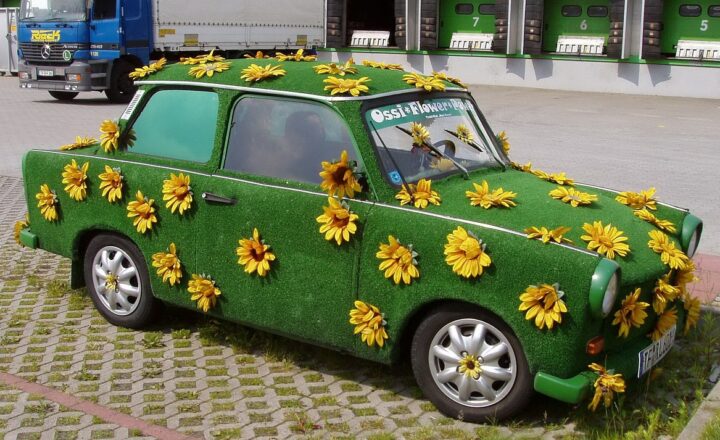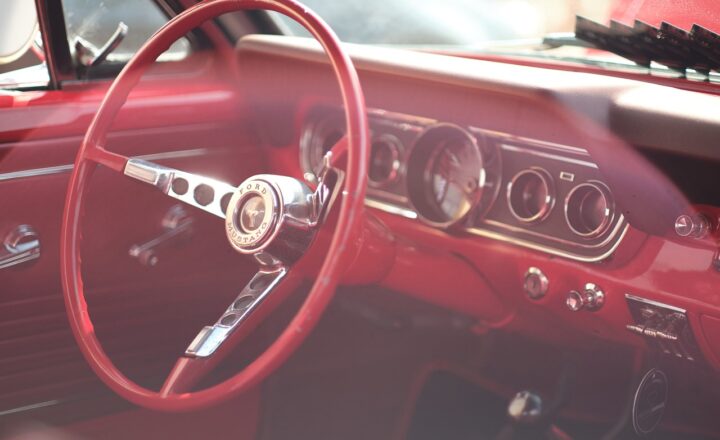Exploring the Hidden World of Car Restoration and the Art of Bringing Classics Back
November 11, 2024

Car restoration is a fascinating journey that encompasses history, craftsmanship, and the relentless pursuit of excellence. It’s not merely about fixing up old vehicles; it’s about reviving lost legacies and preserving the beauty of automotive masterpieces from yesteryears.
In recent years, the art of car restoration has gained traction among enthusiasts and hobbyists alike. With classic car values skyrocketing, more individuals are drawn to this captivating world, keen to breathe new life into vehicles that tell stories of bygone eras.
1. Understanding Car Restoration
At its core, car restoration involves the process of returning an old or damaged car to its original condition or even improving its aesthetics and performance. Restoration can vary in depth, from simple cosmetic upgrades to complete overhauls that require extensive labor and expertise. There are three broad categories of restoration:
- Concours Restoration: This type represents the highest level of restoration, emphasizing authenticity and attention to detail. Vehicles restored to concours standards are intended for show and must meet strict guidelines to reflect their original specifications accurately.
- Driver Restoration: This category focuses on making a classic car roadworthy while retaining its original character. Here, restorers may compromise on some cosmetic details to enhance performance and usability for regular driving.
- Custom Restoration: This involves modifying a car to reflect a unique vision or style, blending modern technology with classic design. Custom restorations are highly personal and may incorporate personalization tailored to the owner’s desires.
Car restoration is as much an expression of art as it is a technical field. Every restoration project is a unique story that unfolds through research, hard work, and creativity.
2. The Four Stages of Car Restoration
Restoring a classic car can be broken down into four essential stages, each requiring a unique skill set and expertise:
- Assessment and Planning: Before diving into restoration, it’s crucial to assess the vehicle’s current state, identify its originality, and create a comprehensive plan. This plan may include budget, timeline, and a checklist of necessary repairs. Additionally, seeking documentation or restoration examples of similar models can provide valuable insights.
- Disassembly and Repair: This stage involves carefully dismantling the car to access all areas needing work. Common repairs include fixing rust damage, straightening bent frames, or replacing body panels. It’s vital to keep track of all parts and ensure you document this process for future reference during reassembly.
- Reassembly and Detailing: Once repairs are complete, it’s time to put the car back together. Attention to detail is paramount here; every bolt, nut, and wire should be returned precisely as it was original. Detailing often includes polishing and painting to restore the car’s aesthetic appeal, so investing extra effort ensures a beautiful finish.
- Testing and Enjoyment: The final stage involves testing the vehicle’s performance to ensure everything operates correctly. After the check, it’s time to enjoy the fruits of your labor! Taking it for a spin not only reaffirms your hard work but also allows you to experience the classic charm of your restored vehicle on the open road.
3. Common Challenges in Car Restoration
While restoring a classic car can be rewarding, it’s not without its challenges. Prospective restorers should be prepared for potential setbacks, including:
- Rarity of Parts: Finding original or reproduction parts for older models can be complex and time-consuming. Many restorers turn to online marketplaces, specialty suppliers, or junkyards to source components, but patience is often required to find the right fits.
- Cost Overruns: Restoration projects can become costly, especially when unexpected repairs arise. Setting a realistic budget and allowing for contingency expenses is crucial for keeping financial stress at bay.
- Time Commitment: Restoring a classic car is a labor-intensive endeavor that can take months or years to complete. It’s vital to manage your expectations and remain committed to the project, even when challenges arise.
- Skill Gaps: Depending on your skill set, you may encounter tasks that require professional help. It’s essential to recognize when you need assistance and find trustworthy experts to aid in the restoration process.
Despite these challenges, the sense of accomplishment that comes with restoring a classic car is unrivaled. The dedication and perseverance payoff with a vehicle that’s full of history and timeless beauty.
4. The Art of Finding a Classic Car to Restore
Finding a classic car for restoration can be an adventure in itself. Here are some tips to consider when searching:
- Define Your Goals: Determine what type of car you want to restore. Are you interested in a specific make or model, or perhaps a particular era? Pinpointing your goals helps narrow your search and enhances your focus on potential projects.
- Research Vehicle History: When you discover a potential candidate, researching its history can reveal critical insights about original parts, previous modifications, and overall condition. Documentation is crucial for assessing whether a vehicle is worth investing in.
- Inspect Thoroughly: Always perform a comprehensive inspection of the vehicle. Check for rust, engine condition, body integrity, and other structural factors. If you’re not skilled in this area, bringing a knowledgeable friend or mechanic along can provide additional guidance.
- Negotiate Wisely: Once you’ve found the right candidate, don’t hesitate to negotiate the price based on the car’s condition. Be transparent about any significant repairs it may require to ensure a fair deal.
Finding the right classic car makes the restoration process more enjoyable and fulfilling.
5. The Community of Car Restoration Enthusiasts
The world of car restoration is vibrant and welcoming, filled with enthusiasts ready to share knowledge and experience. Joining online forums, car clubs, or attending local meetups can strengthen your passion for restoring classic vehicles. Engaging with fellow restorers opens doors to:
- Networking Opportunities: Connect with experts, hobbyists, and potential buyers or sellers of restoration projects.
- Skill Development: Workshops, classes, and mentorship programs provided within these communities allow budding restorers to gather crucial skills and gain insights into best practices.
- Resources and Tools: Many groups share resources, making tools and parts more accessible for restoration projects.
Being part of a community fosters support and encouragement during the sometimes daunting task of restoring a classic vehicle. It can also lead to lasting friendships and unforgettable experiences.
Conclusion
Car restoration unites art, skill, and a profound appreciation for history. For those interested in tapping into this hidden world, understanding the steps involved, embarking on the journey, and finding camaraderie within the community can lead to the successful revival of classic automobiles that continue to inspire and mesmerize. Whether you’re driven by passion, profit, or a deep love for vintage cars, the art of restoration promises a rewarding adventure that’s uniquely yours.
Start your journey today by researching, planning, and connecting with others who share your passion. Soon, you might find yourself restoring your very own piece of automotive history.






